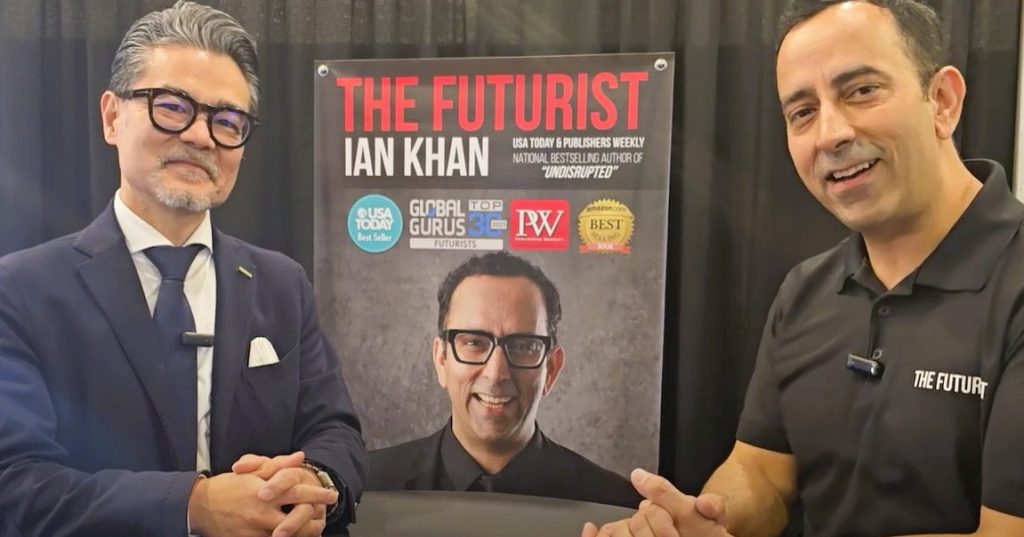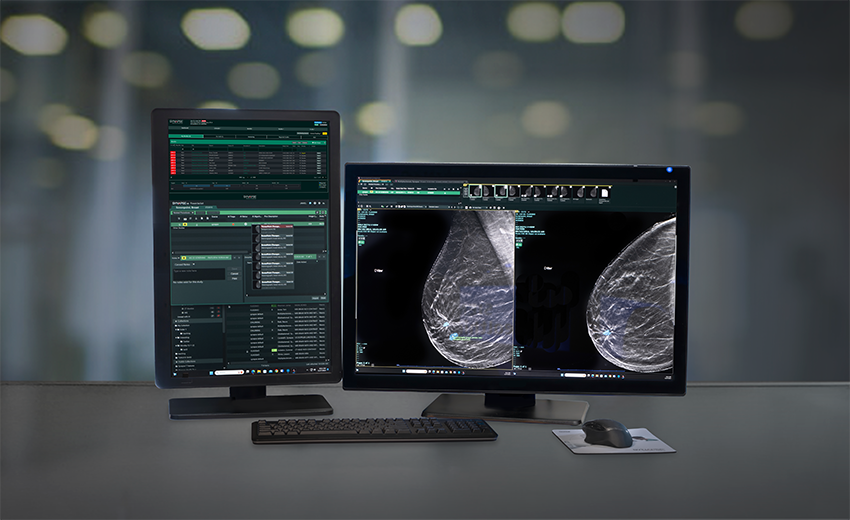
Fujifilm Healthcare’s enterprise imaging team kicked off the new year in a big way, heading to Las Vegas for another impressive showcase of our latest Synapse Enterprise Imaging solutions at the annual Healthcare Information and Management Systems Society (HIMSS) meeting.
Fujifilm’s HIMSS 2025 showcase demonstrated our commitment to providing optimal, seamless medical informatics experiences for clinical and IT teams across healthcare enterprises and outpatient imaging centers. During the meeting, I had the opportunity to meet with customers, partners and media, including Ian Kahn, host of The Futurist, a series that focuses on valuable insights on AI, technology, sustainability and more. During my conversation with Ian, I shared my thoughts on the importance of IT innovation in the future of quality healthcare delivery in America.
The American Hospital Association recently released a report showing that hospitals and health systems continue to experience significant financial pressures. Technological innovation can significantly contribute to hospital profitability by improving efficiency, reducing costs, and enhancing revenue streams through advancements like artificial intelligence, electronic health records (EHRs) and data analytics.
At its most basic level, enterprise imaging can boost hospital profitability by streamlining workflows, improving data accessibility, enhancing diagnostic accuracy, and potentially reducing costs associated with imaging, storage, and IT management.
But there are other ways that the implementation of the right enterprise imaging solutions can contribute to profitability. For example, value-based care is a current trend that experts say will continue. Under this model, providers are paid based on the ability to improve outcomes, like reducing chronic diseases through prevention and utilizing evidence-based medicine to make patients healthier. But to achieve these goals, clinicians need the whole patient picture. After all, the complete patient record—which Fujifilm’s enterprise imaging solutions provide—offers evidence to support smart diagnostic decision making.
Then there is growth through acquisition, which is quite common among hospitals today. The right enterprise imaging solutions can solve the problem that comes with inheriting multiple IT platforms. It can address integration issues and help providers eliminate redundancies—increasing efficiencies, workflow, and ultimately, patient outcomes. Fewer systems also mean fewer service contracts and more savings. This trend of innovative IT solutions helping to set hospitals on the right course for profitability is sure to continue into the next decade and beyond.
Finally, there is a growing trend toward evidence-based management, which drives more profitability at hospitals. The key is to become an evidence-based and data-driven organization that utilizes operational, clinical and financial data to optimize the workings of the health system. But all too often, access to meaningful data is stored in disparate systems that do not communicate with one another. Effective enterprise imaging solves that problem and helps hospitals move toward data-driven decision making, which can have amazing results and save significant dollars. It’s all about choosing enterprise imaging solutions with robust analytics and business intelligence. The insights gained can help drive business decisions for the future that strengthen the organization financially and give it a competitive edge.
Advances in AI have the potential to transform many aspects of healthcare, enabling a future that is more predictive, precise and personalized for the patient.
Fujifilm has integrated and leveraged AI for several of our leading-edge medical innovations, including the creation of an AI-powered system to elevate performance and quality in colonoscopy, the integration of AI in one of our cardiovascular ultrasound systems to automate echocardiograms, and AI across our Synapse enterprise imaging portfolio that can significantly improve providers’ reading, interpretation, and reporting workflow.

One of the AI-powered innovations we highlighted at this past HIMSS is Fujifilm’s Synapse Worklist Orchestrator, which is a cloud-enabled, AI-driven enterprise imaging solution designed to drive provider workflow efficiency, reduce clinical burnout, and improve diagnostic skillsets through multidimensional peer review. This cutting-edge solution uses customer-defined algorithms to automate worklist assignments, triage critical and unexpected result notifications, flag diagnostic error patterns, and share interpretations with an anonymous network of sub-specialists for more comprehensive, collaborative peer review.
The healthcare industry will also continue to see new players in the AI field in the future—but not just healthcare IT companies. We will soon see non-healthcare players like Walgreens and CVS using AI tools to enhance the patient experience in various ways.
It is our hope that providers will always stay open to new technologies. IT innovation, including AI, can be a major catalyst that helps health systems gain a competitive edge in the future while also delivering better patient care and outcomes.
At Fujifilm, we live and work by a credo: Innovation should be about solving a problem or challenge. Technology solutions should be aligned to market dynamics. That’s what we have always worked toward at Fujifilm. Our comprehensive Synapse Enterprise Imaging portfolio was designed with healthcare providers’ challenges in mind, including inefficient workflows, costly data migrations, interoperability issues, and integration complexities, to name a few.
Fujifilm’s robust offerings—Synapse PACS, RIS, VNA, digital pathology, and our AI-enabled offerings AI Orchestrator and Worklist Orchestrator—marry seamless data access with workflow efficiency for providers and tear down silos from a software standpoint, providing an optimal heatmap. That’s solving a problem; that’s true innovation.
To listen to The Futurist interview in its entirety, please click here.